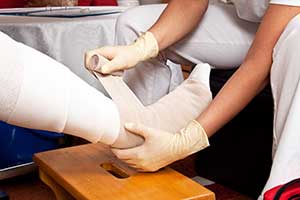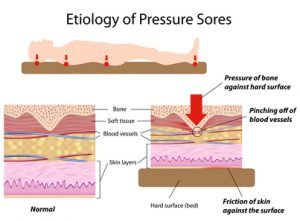Search
Wounds Take A Toll On Nursing Home’s Bottom Line
New Medicare and Medicaid guidelines will soon put pressure on nursing homes and other long-term care facilities to provide better wound-care for their residents. Under the revised pressure ulcer regulations (F-314), facilities will be unable to receive reimbursement from Medicare or Medicaid if the agencies deem the pressure ulcer to be avoidable.
 According to McKnight’s Long Term Care News, up to 28% of all residents in long-term care facilities suffer from pressure ulcer’s. The cost for treatment of pressure ulcers is estimated to be more than $1.3 billion.
According to McKnight’s Long Term Care News, up to 28% of all residents in long-term care facilities suffer from pressure ulcer’s. The cost for treatment of pressure ulcers is estimated to be more than $1.3 billion.
Under the current system, nursing homes and long-term care facilities may submit charges for pressure ulcer care to Medicare and Medicaid. Essentially, there is no economic incentive to provide preventative pressure ulcer care for most facilities. The new guidelines will put pressure on nursing home owners and administrators to readdress the way they provide care, or they their bottom lines will suffer.
Most facilities wound management guidelines are not adequate. ‘Most of the standards are below what is necessary to decrease the incidence of wounds and manage current wounds,” according to wound care expert, Margaret Bryant, PT.
The first step in providing better wound care is for facilities to provide better training for their staff. ‘Preventing and managing pressure ulcers takes a very aggressive approach–one that requires facility wide buy-in and multi-disciplinary involvement,’ says Heather Hettrick, PT, PhD, a director at American Medical Technologies Inc.
Even the most basic pressure ulcer prevention techniques are ignored or done improperly. In order to prevent pressure sores on heels, off-loading boots are the best choice. However, the boots must be properly sized and adjusted in order to successfully keep the heel in the air as the boots are intended. Improperly used boots are ineffective.
Related:
Are bed sores on the heels common?
Bed Sores Continue To Plague Nursing Home & Hospital Patients In All Demographics
 Nursing Home Law News
Nursing Home Law News



